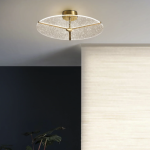
Introduction
Isamu Noguchi was a Japanese-American sculptor and designer who created works that blended Eastern and Western influences. His work appealed to a wide range of audiences, from art enthusiasts to ordinary people who appreciated his simple yet elegant forms. Noguchi’s legacy is still felt today, as his work continues to inspire new generations of artists.
Early Life and Education
Noguchi was born in Los Angeles, California in 1904 to a Japanese father and an American mother. His parents separated when he was young, and he spent much of his childhood in Japan with his father. He later returned to the United States to attend school, eventually studying at Columbia University in New York City.
It was during his time at Columbia that Noguchi began to explore his interest in sculpture. He took classes at the Leonardo da Vinci Art School and went on to work as an assistant to sculptor Gutzon Borglum. Noguchi’s early works were mostly figurative and showed little of the abstract style he would later become known for.
Exploring Abstract Forms
In the 1930s, Noguchi began to experiment with abstract forms, creating works that combined sculpture and design. One of his most famous works from this period is the “Playground Equipment” series, which included a slide and other toys for children. Noguchi’s goal was to create designs that were both functional and sculptural, and his work in this area helped to establish him as a leading innovator in the field.
Noguchi’s other works from this period include many abstract forms, including “Cloud Mountain,” “Waterfall,” and “The Seed.” These works often featured flowing, organic shapes, and explored the relationship between space and form.
Landscape Design and Public Art
In addition to his work in sculpture, Noguchi was also a prolific landscape designer and public artist. He was responsible for the design of many public spaces, including the UNESCO Headquarters in Paris and the Billy Rose Sculpture Garden at the Israel Museum in Jerusalem. Noguchi believed that public spaces should be inviting, accessible, and reflective of the culture and history of the people who used them.
One of Noguchi’s most famous public works is the “Red Cube” in New York City, which was commissioned by the Marine Midland Bank. The large, red cube is located in the center of a busy pedestrian plaza, and has become a beloved fixture of the city’s landscape.
Legacy and Influence
Noguchi continued to work throughout his life, creating new sculptures, designs, and public works. He passed away in 1988, but his legacy lives on through his art and the Isamu Noguchi Foundation and Garden Museum in Queens, New York.
Noguchi’s influence on the art world is hard to overstate. His work helped to bridge the gap between Eastern and Western forms, and his experiments with abstract shapes and functional design continue to inspire artists today. Noguchi’s impact can be seen in the works of many contemporary artists, from sculptors to architects to landscape designers.







